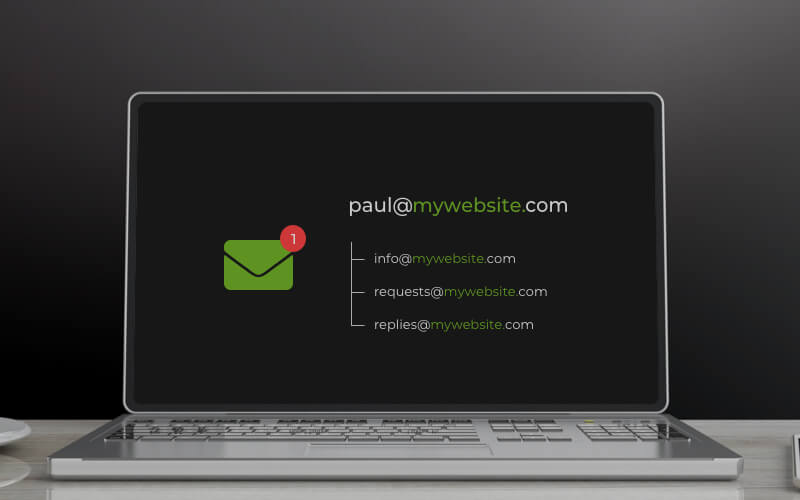An email domain should go hand in hand with your brand
An email domain is the part of an email address that comes after the @symbol. For personal emails, it is most often gmail.com, outlook.com, or yahoo.com. However, in a business context, companies are almost certain to have their own email domain.
If you’ve already got a domain in mind you’d like to register, don’t waste any more time! Register your email domain today before it gets snapped up by someone else.
How to get an email domain?
Simply put, you will need two things – a domain name and a hosting subscription. Most web hosting providers offer some form of email hosting but plans and features can vary.
Spot the difference: email address, email alias, and business email

When people talk about email addresses, they mean any address in the format of email@domain.com. However, the use and operation of email can be a bit more nuanced. For example, you can use an email alias, also known as a forwarding address; it looks just like a normal email account but has no hosting space associated with it. All messages sent to the alias are automatically redirected to a hosted email address.
Both mailboxes and aliases can be personal and professional. Business email is often shorthand for a company having its own email domain rather than using a free service like Gmail or Yahoo. Companies typically use their email domain for business communications.
Business email: 8 ways you’re using it wrong
It’s easy to get started with an email domain, and it’s just as easy to create new email aliases and mailboxes. However, beginners sometimes make these mistakes when they set up their business email:
- Relying on your ISP’s email solution like company@btinternet.uk or johnshow@verizon.net. Tying your business email to a specific provider can prove difficult down the road – especially if your business relocates to an area your ISP does not serve.
- Signing up for a free service instead of their own email domain. While saving money on your business email, you’re discrediting your new business venture with a @gmail address.
- Using nicknames to amp up your ‘cool’ factor. Emails like the_dude@, jameswebdev@, and colin91@ are not great when trying to shape your brand’s professional image.
- Skipping aliases and relying on staff email addresses only. Sometimes it’s as easy as creating a sales@ alias for your website-driven inquiries instead of posting your sole sales manager’s john@ email address. Aliases are usually free and unlimited and are a great way for new businesses to look a bit bigger and protect themselves against miscommunication due to staff turnover.
- Using business email for personal use like signing up to social networks and hobby clubs. You don’t want your company information associated with off-hour activities. Who knows which party photos will surface one day and damage your brand reputation?
- Switching the email domain too often. People keep business cards and contact lists around for years. If you jump from one email domain name to another too often without redirecting the email addresses, you’ll likely miss out on important leads and conversations.
- Forgetting to specify sender names and profile pictures. Many desktop email clients and webmail interfaces display the sender’s name in the inbox. It’s a great opportunity to easily signpost your business and brand for the recipient.
- Opting for a really long email domain. Unlike web links that most users click on, email addresses are regularly typed. Be considerate to your correspondents and avoid typos by choosing a short domain for your business email. Ideally, you’d like both your website and email to use the same domain; however, if the main site has a long domain name, register a shorter version for your own email domain.
